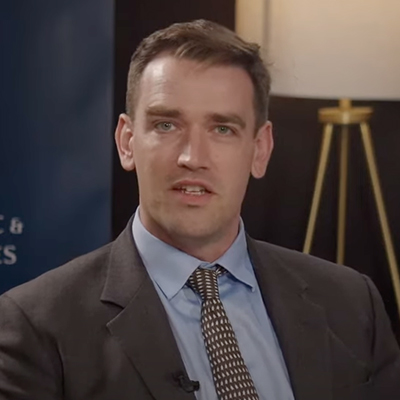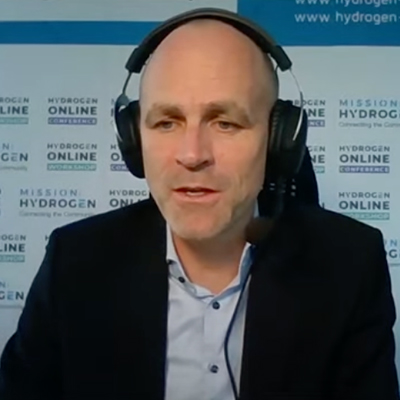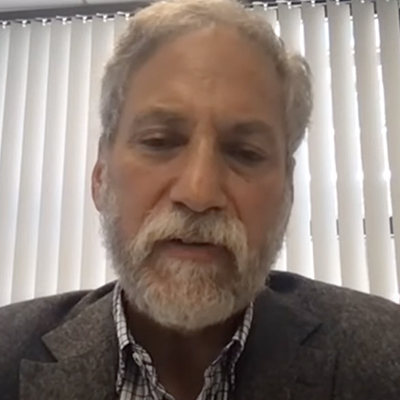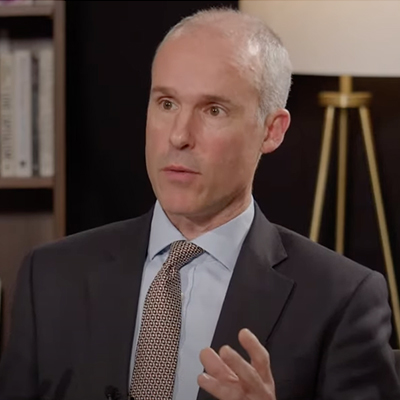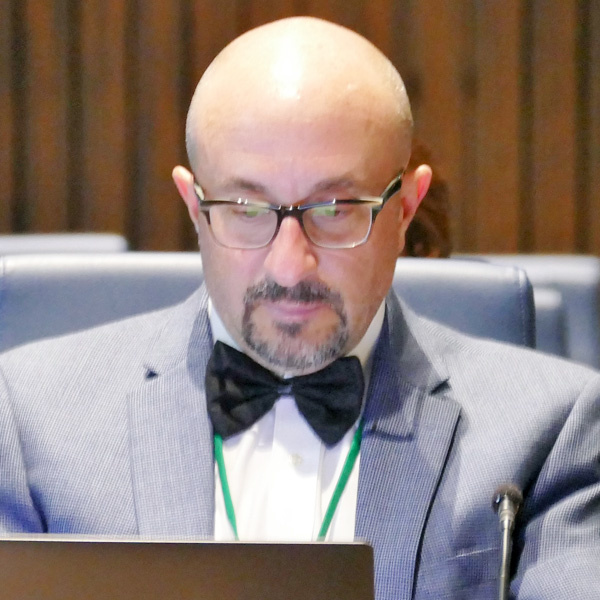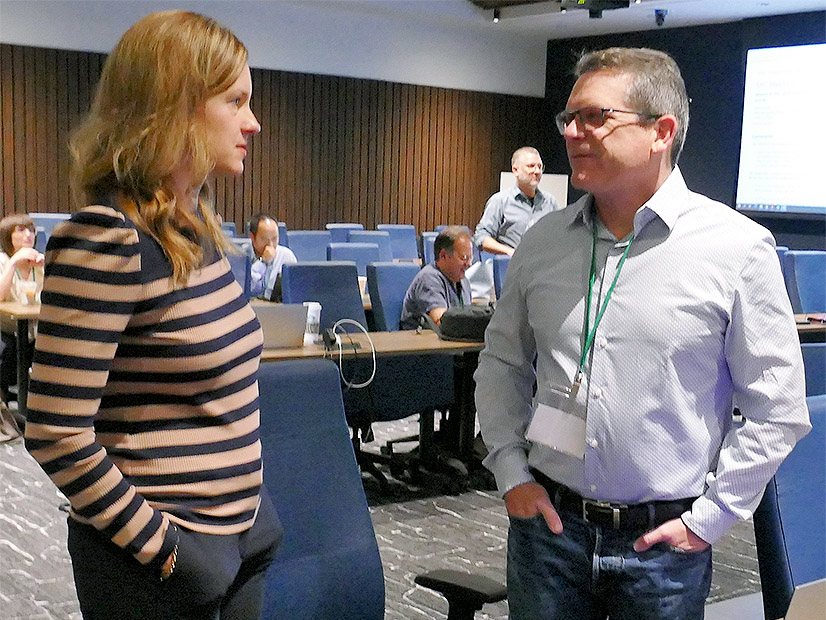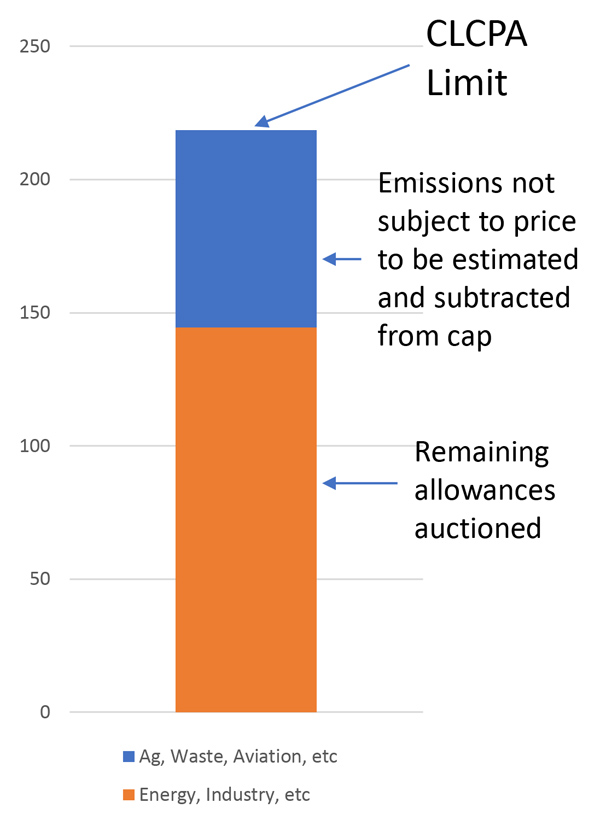ATLANTIC CITY, N.J. — The state has formed a multi-stakeholder task force to plan how to accelerate the effort to reduce greenhouse gas emissions from buildings, its second largest source of emissions, through electrification, Gov. Phil Murphy told hundreds of attendees at a state-organized Clean Energy Conference on Monday.
The Clean Buildings Working Group — which will include union leaders, academics, experts in industry, environmental justice advocates, a builder, and private heating and energy companies — will focus on how best to implement the transition from fossil fuel heating, appliances and boilers to clean energy backed with energy efficiency strategies, state officials said.
The initiative will “help us ensure that we maximize the potential of every watt of green energy” as the state reaches for its goal of 100% clean energy by 2050, Murphy told the conference, at which more than 650 people registered to attend. The group will “focus on the job of making our current building stock more energy efficient and on ensuring that new buildings are arguably more so.”
“It will require a skilled workforce to employ new green building technologies,” Murphy said. “It will further require making needed health and safety repairs to low- and moderate-income housing to get them to the starting point for beneficial electrification. And it will require deploying deep federal investments in green building technologies equitably across should.”
Jesse Jenkins, an assistant professor of engineering at Princeton University, who gave a keynote speech on “The Economics of Decarbonization” at the start of the second day of the conference, told the audience that while there have been a variety of strategies tried and some adopted across the nation on how to increase the use of electric vehicles or install more electric chargers, the challenge of converting buildings to clean energy is largely untouched.
“I’ve not seen any state yet quite crack the code on what the building standard is, what the building policy is, that every state that is interested in leading [on clean energy issues] should be following,” said Jenkins, who leads the Princeton ZERO Lab. The federal government has also largely left it alone, aside from recent funding for building electrification, leaving the states to act, he said.
“The state that cracks the code will see that replicated,” he said.
Tackling Building Emissions
Murphy’s working group initiative comes after the state has taken some strides in addressing building emissions but not with the same vigor as it has put into some other clean energy sectors, such as offshore wind and stimulating the uptake of electric vehicles and installation of electric chargers.
The New Jersey Board of Public Utilities (BPU) on Sept. 7 approved a program that will require 30,000 buildings of more than 25,000 square feet to annually report their water, gas and electricity use in an effort to stimulate conservation and cut energy use. (See NJ BPU Backs Utility Benchmarking for 30,000 Buildings.)
In addition, the New Jersey Department of Environmental Protection (DEP) has posted new rules on the New Jersey Register that would prevent it from issuing permits for new fossil fuel-fired boilers of 1 to 5 MMBtu unless it is “technically infeasible” to use a non-fossil fuel boiler. The rules could be enacted Dec. 6 if no major changes are made.
The introduction of the rules showed the sensitivity of some stakeholders to building electrification, with a coalition of 24 New Jersey business and union interests — among them some of the state’s largest business groups — lobbying to halt the state plan. The group says 5,500 buildings around the state would come under the boiler rules. (See Business Groups Try to Head off NJ Building Electrification Rules.)
The governor formed the working group in part because of the complicated nature of the task of electrifying buildings that are old and need extensive renovation, said Jane Cohen, executive director of the governor’s Office of Climate Action and the Green Economy.
“A lot of our housing and commercial buildings really need some significant health and safety and other types of repairs to get to the starting line to be able to partake in beneficial electrification,” said Catherine Klinger, a senior policy adviser to Murphy who will head the working group.
“Buildings are just more complicated than EVs and other types of green technology, because there are so many different types of buildings, so many different use cases,” she said. “There’s lots of legacy systems; you’re talking everything from delivered fuel and propane to old boilers and large multifamily and commercial buildings. So, there’s lots of different kinds of technologies that need to be employed, skillsets that you need in the workforce and strategies to decarbonize those different types of buildings.”
In addition, the state wants to ensure that low- to moderate-income residents and environmental justice communities get high priority in the allocation of resources for electrification, she said. The issue will be addressed in a similar way to the BPU’s recent Whole House pilot program, she said. The program, announced on Sept. 26, seeks to remediate health and safety hazards — such as electrical deficiencies and lead-based paint — in participant houses in coordination with the implementation of energy-efficiency measures.
Klinger said that through meetings and input from members, the group will be “looking at legislative levers, policy levers, funding incentives, and then out of those insights, our office will develop a roadmap to building decarbonization.”
Promoting Equity, and Transmission
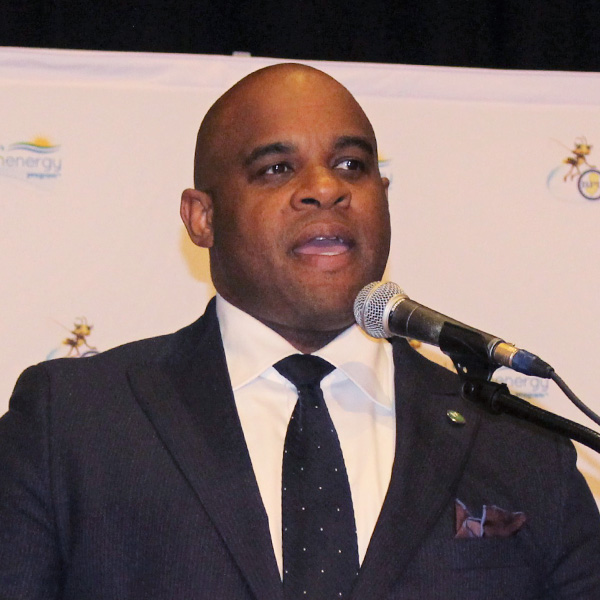 FERC Commissioner Willie Phillips | © RTO Insider LLC
FERC Commissioner Willie Phillips | © RTO Insider LLC
Speaking after Murphy at the conference, FERC Commissioner Willie Phillips cited the Whole House program as one that other states can follow.
The program “is a beautiful combination of energy efficiency and equity,” he said, adding that “it recognizes that before any customer can take advantage of the clean energy transition, you have to make sure” that you take care of the fundamentals of their housing.
To embark on the clean energy transition, he said, “we have to acknowledge that equity must come first,” as New Jersey has done.
Phillips said that as a former president of the Mid-Atlantic Conference of Regulatory Utility Commissioners, he believes that “New Jersey has laid out a blueprint that many other states can follow” in a variety of issues, among them solar energy and offshore wind.
Phillips also took the opportunity to push for New Jersey and other states to take a long view of upgrading the grid. FERC in April proposed rules (RM21-17) that would direct transmission providers to revise their planning processes to, among many other things, identify infrastructure needs on a long-term, forward-looking basis and propose a list of benefits on which they would base their selections of proposed projects to meet those needs. (See FERC Issues 1st Proposal out of Transmission Proceeding.)
“If we don’t plan long-term, it’s going to hurt each and every one of you in your pocket because you are going to build out a dumb system for a smart future,” he said. Such a result would end up being expensive and is “going to hurt each and every person in this room.”
“It is no secret that our transmission needs have increased over the years,” he said, citing driving factors such as resource retirements, electrification of transportation and buildings and clean energy policies. “If we cannot do this affordably, we will not do it successfully,” he said, adding that further costs can be saved if “we squeeze as much capacity as we can out of the current system.”
“We are not requiring planners to elevate one particular policy over another. But what we are doing is saying, ‘This is the reality. This is what is happening. And it makes sense for us to consider these in our planning before they come up as a problem on our system,’” he said. “I am also proud to say that the proposed rule elevates the role of states regarding transmission buildout and cost allocation.”
Such a planning process would also help avoid “problems, and litigation and delays on the back end so that we can actually get some of this needed transmission built in an efficient manner.
Asked after the speech what are the biggest issues facing the grid, he cited “interconnection reform.”
“We have so many of our projects entering the interconnection queue, [and] we know that only 20% of those are going to be interconnected ultimately,” he said. “We have to figure out a way to undo that bottleneck to make sure that those projects can go ahead.”
He said the solution would be to go from a “serial, first-come, first-served process, to a clustered approach where it’s first-ready, first-served. The problem with the other 80% is they are caught in a situation that is “almost like a game,” he said.
“You know you are going to have to have for some projects very costly upgrades to the system. So, you see that those upgrades are needed and then you withdraw the project,” he said. “Then the person who finally gets lucky and gets in, they have to shoulder the cost of that upgrade and everybody else gets a free ride. That is what we are trying to solve.”
